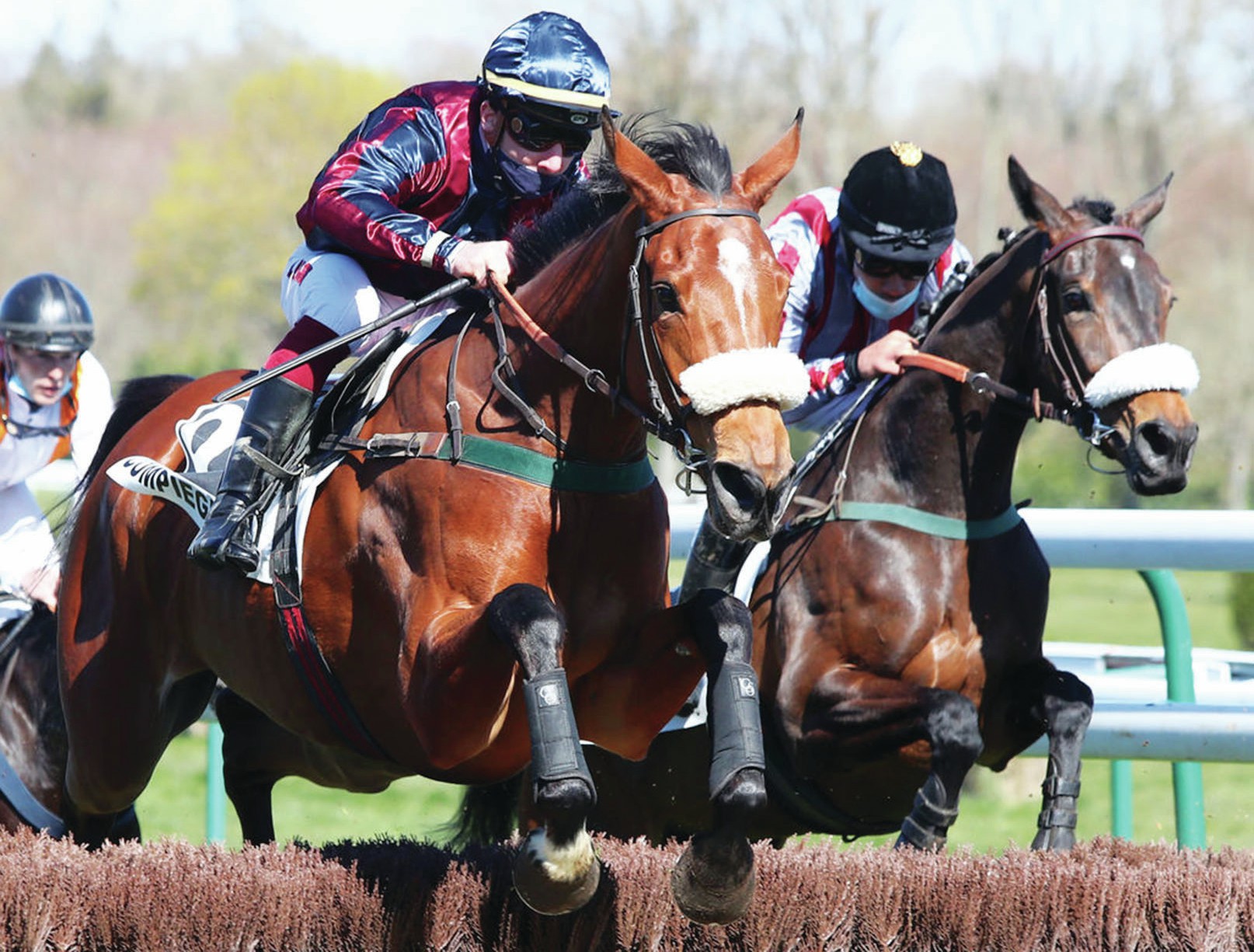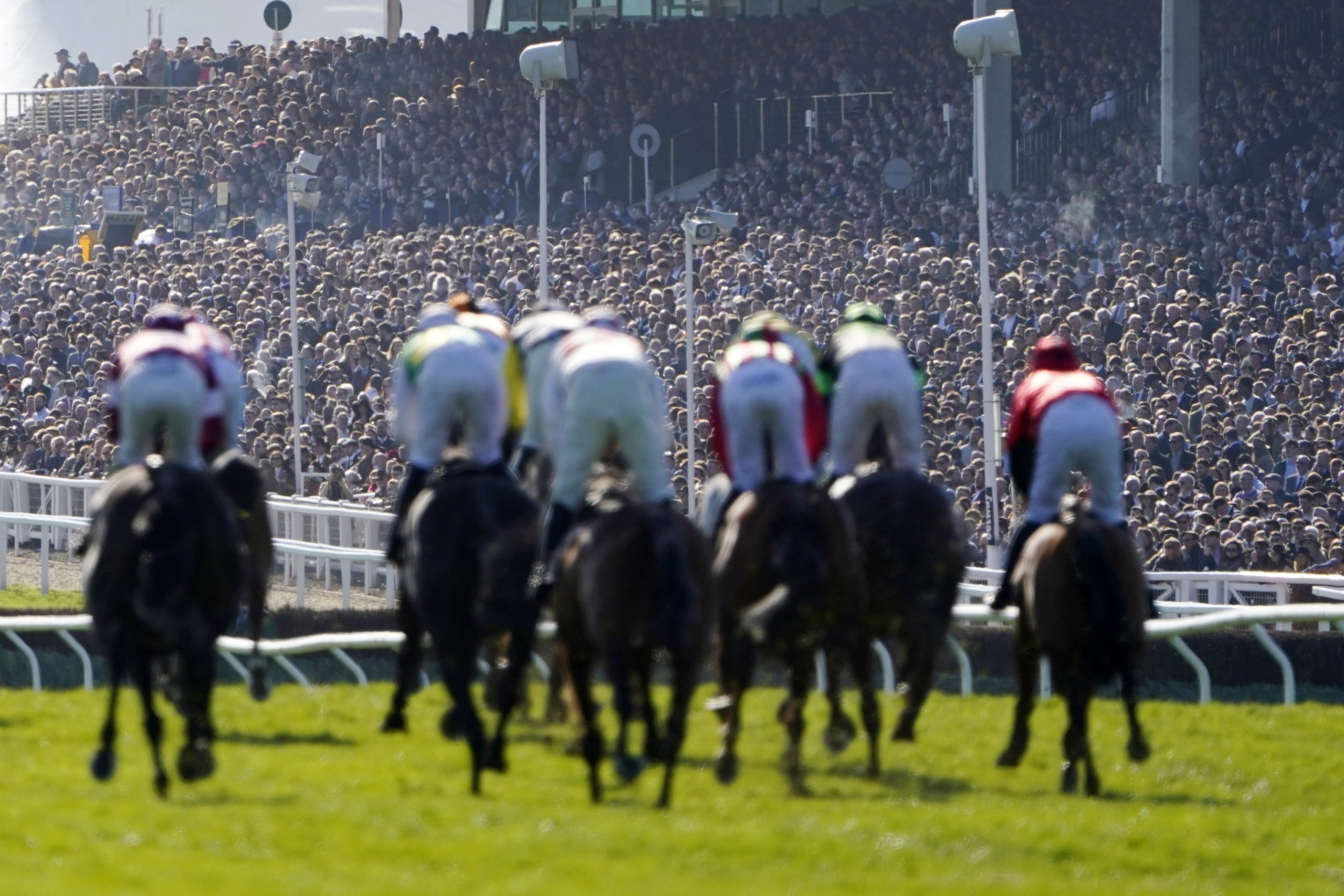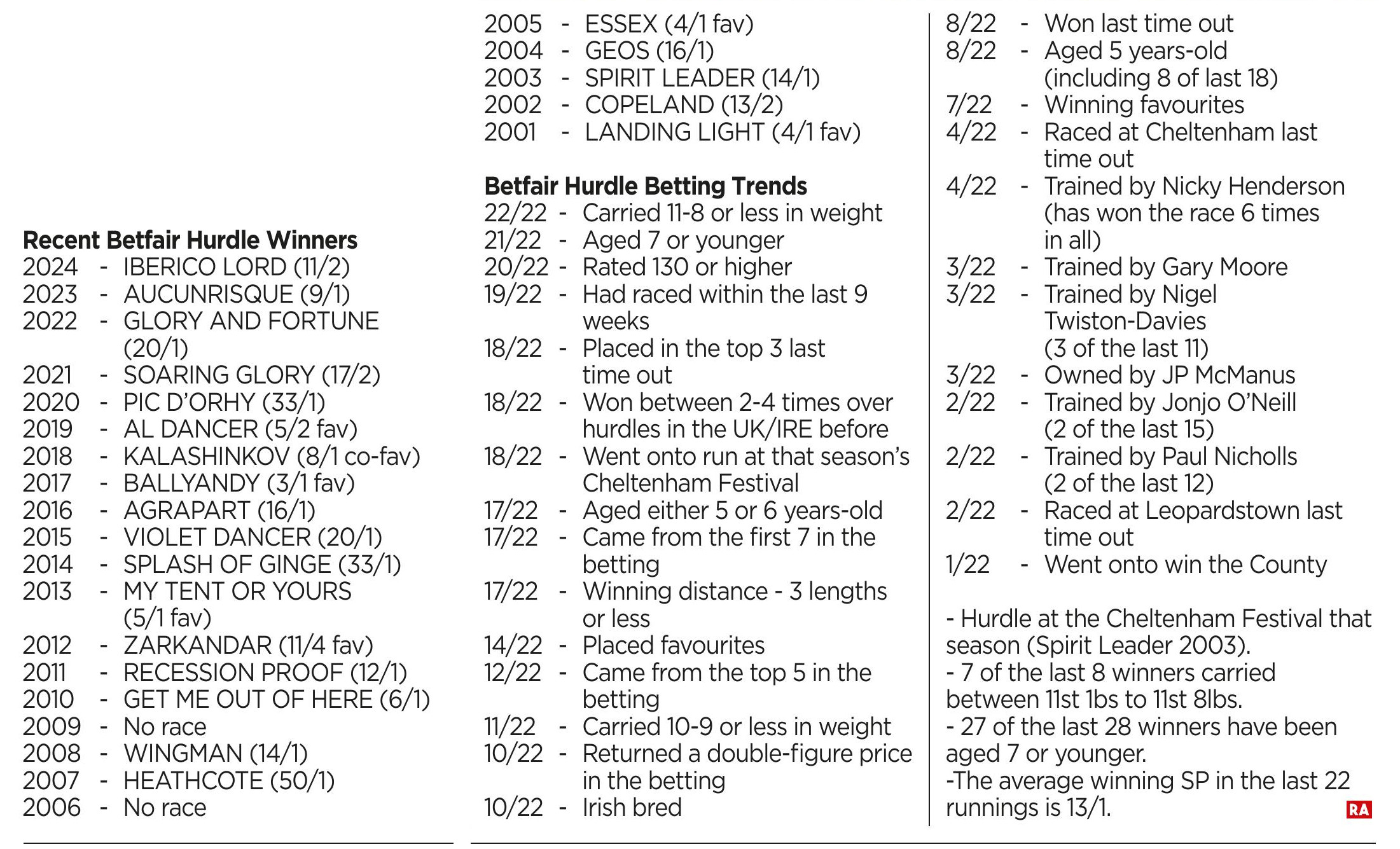
The Grade Three Grand National Trial Chase is staged at Haydock racecourse each year and provides racing fans with further clues ahead of the Grand National.
That said, the race is all but a trial in name as since 1980 we’ve not seen a winner of the Unibet Grand National Trial follow-up that season in the Aintree marathon – Suny Bay, the 1997 winner, did go onto finish second at Liverpool in the National. The 2005 winner, Forest Gunner, went onto run a respectable fifth, while in 2017 we saw the David Pipe-trained Vieux Lion Rouge win this trial before going onto finished a respectable sixth in the Grand National a few months later.
In 2019, we saw the Colin Tizzard-trained Robinsfirth win the race to give the yard their first success in the race, while in 2020 the Alex Hales-trained Smooth Stepper caused a slight shock to win the race at 33/1, with the 2018 winner – Yala Enki – back in third as the beaten favourite. While 12 months ago – in 2021 – the Richard Hobson-trained Lord Du Mesnil, who was runner-up in 2020, went one place better.
Here at RACING AHEAD we look back at recent winners and gives you the key stats to take in the 2022 renewal – this year set to be run on Saturday February 19th.
Recent Haydock Grand National Trial Winners
2021 – LORD DU MESNIL (8/1)
2020 – SMOOTH STEPPER (33/1)
2019 – ROBINSFIRTH (8/1)
2018 – YALA ENKI (8/1)
2017 – VIEUX LION ROUGE (8/1)
2016 – BISHOPS ROAD (13/2)
2015 – LIE FORRIT (8/1)
2014 – RIGADIN DE BEAUCHENE (16/1)
2013 – WELL REFRESHED (9/2 fav)
2012 – GILES CROSS (4/1 fav)
2011 – SILVER BY NATURE (10/1)
2010 – SILVER BY NATURE (7/1)
2009 – RAMBLING MINSTER (18/1)
2008 – MIKO DE BEAUCHENE (17/2)
2007 – HELTORNIC (12/1)
2006 – OSSMOSES (14/1)
2005 – FOREST GUNNER (12/1)
2004 – JURANCON II (10/1)
2003 – SHOTGUN WILLY (10/1)
Haydock Grand National Trial Betting Trends
19/19 – UK-based trained winners
19/19 – Had won between 2-4 times over fences (rules) before
17/19 – Had won over at least 3m (fences) before
15/19 – Had won just 2 or 3 times over fences (rules) before
15/19 – Aged 10 or younger
15/19 – Had raced within the last 7 weeks
15/19 – Rated 135 or higher
14/19 – Finished in the top three last time out
13/19 – Aged 9 or younger
13/19 – Came from outside the top 3 in the betting
12/19 – Finished in the top two last time out
11/19 – Carried 11-0 or less
10/19 – Returned a double-figure price in the betting
9/19 – Unplaced favourites
8/19 – Won last time out
8/19 – Winners that went onto run in that season’s Grand National (all unplaced)
7/19 – Irish-bred winners
5/19 – Ran in the Welsh Grand National last time out
4/19 – Winners that won by exactly 15 lengths
3/19 – Won with 11-12 in weight
3/19 – Finished 1st or 2nd in the Welsh Grand National last time out
3/19 – Trained by Lucinda Russell
2/19 – Winning favourites
2/19 – Trained by Venetia Williams
5 of the last 7 winners returned 8/1 in the betting
The average winning SP in the last 18 runnings is 11/1
RACING AHEAD VERDICT: With the popular grey, Bristol De Mai in the race then this means most of the others will get a chance to race with less than 11st. Only last year’s winner – Lord Du Mesnil – and the consistent Sam Brown will carry 11st+. Bristol De Mai, as we know, loves it here at Haydock and over the years has won here five times. The heavy ground is fine too and a recent close second at Lingfield showed he’s still loving his racing at 11 years-old. His handicap mark of 159 makes him dangerous as he was rated 170 just a few years ago, but the worry would be that he’s only won the once from his last 11 races. Lord Du Mesnil is only a pound higher than when winning this 12 months ago, but since then has struggled to find his form. Sam Brown rarely runs a bad race and a recent second in the Peter Marsh Chase here was another solid effort – he’s now run here twice and won and been second. The betting suggests they’ve all got the former Welsh National winner – Secret Reprieve – to beat, and with just 10-5 he’s got a featherweight. He’ll be better for a run over Christmas in the Welsh National (5th), but he doesn’t look great value for a horse that was beaten 44 lengths last time. Enqarde has to be considered too after a good 10 length win here in December, but is up 9lbs here. I think another of the old-timers – BLAKLION – can go well too. He’s returned to form the last twice to win both times here, will love conditions and despite being up another 9lbs here (rated 145) is still fairly well treated on his old form – rated as high as 161. Mint Condition is another course winner in the line-up, but the other of interest is recent Lingfield scorer – THE GALLOPING BEAR (e/w). He stayed the 3m5f trip in heavy ground well last time and is up just 5lbs. He also won that last race with 11-12 on his back, so with only 10-7 here this will help. He’s also 3-from-3 over fences at the moment so whereas he lacks experience, he’s also got the scope for more improvement.
As we hot-foot into February – arguably the second most depressing month after January – the slight good news is that the days are starting to get a bit longer and we are now only a few months away from another Aintree Grand National – can you believe it?
Yes, so with the build-up to the National upon us, that means we are starting to see many Aintree hopefuls in action and with that there are several trial races for us to be away of.
This month we see the Haydock Grand National Trial – staged this year on Saturday February 19th – a race run over 3 4 1/2f and, therefore, attracts the extreme staying chasers that can often then head off to the ‘big one’ in April.
Having said all that, there is a huge word of warning ahead of this race with regards to it being a trial that’s been of any use to punter. Yes, in truth, the trades description people could also have a case against the title of this race as it’s a Grand National Trial in name, rather than actually producing the winner of the Merseyside Marathon in April!
Why? Well, we are yet to see a winner land both races in the same season!
The closest we’ve come was when the mighty Red Rum took the Haydock trial in 1975, but could only manage second in the Aintree Grand National that year. Many winners don’t even make it to the big race in Liverpool, while in recent years 8 of the last 19 winners of this race headed to Aintree and were all unplaced – including last year’s winner – Lord Du Mesnil – who was pulled up at Aintree.
Other notable years were in 1997, when Suny Bay won this race and went onto finish second at Aintree, while, more recently, in 2017 the David Pipe-trained Vieux Lion Rouge went onto be sixth later that season.
That said, even though we are still looking for the first horse to win both races, it’s still a contest that is worth looking back on in a few months when National fever steps up a few more notches, plus regardless of whether this race will ever produce a winner at Aintree, it’s still a race in it’s own right and one that has some key trends that have built up over the years.
So, what are the main trends to look for?
Stable Diet: Firstly, ALL of the last 19 winners came from a UK-based yard, but with the Irish not having had many runners in recent years (again, they didn’t have a runner in 2021), this isn’t really a stat that’s going to find you the winner. The bulk of the runners, again this year, are expected to be from home-based trained.
However, there are still a few domestic yards to note. The 2017 Grand National winning stable of Lucinda Russell have had three winners in this race since 2010. While the Venetia Williams team have won two of the last 8 and also had the runner-up – Achille – 12 months ago. You’d also feel that now the Colin Tizzard camp have broken their duck in the race (2019) then anything they run should be respected. While David Pipe, Michael Scudamore, Gary Moore and Kerry Lee are others that have won this race since 2007.
Staying Power: Being run over 3m 4 ½ f, then having stamina in abundance is a ‘must-have’ for any horse to win this race. This also becomes even more important most years with the ground often on the soft or heavy side by the time this race is run. This ‘proven stamina’ stat is further backed-up with horses that have winning form over at least 3m (chase) winning 17 of the last 19 renewals. Plus, it’s slightly more interesting that ALL of the last 19 winners had only won between 2-4 times over fences before – suggesting ‘up-and-coming’ stayers, that might not yet be in the handicapper’s grip, are the ones to focus on. Last year’s winner – Lord Du Mesnil – again backed up this trend coming into the race with three previous chase wins to his name.
Age Concern: The age trend is certainly another to have onside as with 13 of the last 19 winners were aged 9 or younger – 12 months ago three of the 9 runners were aged 11 or older and were all beaten. You can take this a bit further too with 15 of the last 19 (79%) aged 10 or younger – backed up again in 2021 with the winner aged 8. Yes, the 2020 winner – Smooth Stepper – was an 11 year-old, so defied this trend that year – but the last winner before that aged older than 11 was back in 1958! With that in mind, overall history tells us that it’s pretty safe to rule out any real old-timers.
Recent Form: Having a good recent run is another positive. 14 of the last 19 (74%) winners finished in the top three last time out, while if you want to take look at this stat in another way then it might pay to note that 12 of the last 19 (63%) winners of this Grand National trial actually finished first or second in their most recent race – this should knock a fair few out.
With 15 of the last 19 winners also having raced in the last seven weeks, then having a recent outing is also key, plus the same amount (15 of the last 19) were rated 135 or higher.
Betting Market: The build-up to the race in the betting market is another thing to look for. The approach of ‘following the money’ can be a good guide to most races, but with only two winning favourites from the last 19 runnings, then it’s a contest the bookmakers have certainly enjoyed in more recent times. 12 months ago, we saw another unplaced favourite in Enqarde, who could only manage fifth. We’ve also seen 13 of the last 19 winners come from outside the top three in the betting, so don’t be afraid to look a bit further down the betting market – backed up again 12 months ago when Lord Du Mesnil won as the sixth best in the betting. While it’s probably more of a coincidence, but a bit of a ‘fun stat’ here as we’ve seen five of the last seven winners return 8/1! This actually happened again 12 months ago with Lord Du Mesnil returning 8/1 in the betting – spooky!
Weight Watchers: Being a handicap and over this gruelling trip, then the weight carried also plays a huge role. In recent years we’ve seen 11 of the last 19 winners carry 11-0 or less to victory, so this is not a bad cut-off point to have – last year’s winner did defy this stat though when winning with 11st 6lbs. That said, it’s worth pointing out that five of the last six winners carried 11st 4lbs or more, so this weight trend might be taking a turn the other way with better class horses targeting the race.
Horses that ran in the Welsh National last time out (27th Dec 21) are also worth noting with 5 of the last 19 winners having run in that Chepstow race.
In summary, if the best of the trends are anything to go by, then we are very unlikely to see the winner of this race go onto success in the Aintree Grand National in a few months – let alone even run there! And with that in mind – for me – the jury has to be out on how long the race continues to have the tag ‘Grand National Trial’ – it’s basically only because this race is run over one of the longer trips.
However, it’s still a decent contest to try and solve, with plenty of old staying favourites likely to line-up again. Once the final entries are out, I’ll be looking out for those aged 9 or younger, that have proven form over 3m+ (fences) and that finished first or second in the last seven weeks. While don’t forget to respect any Venetia Williams, Lucinda Russell and Colin Tizzard-trained runners.
Good Luck!




















